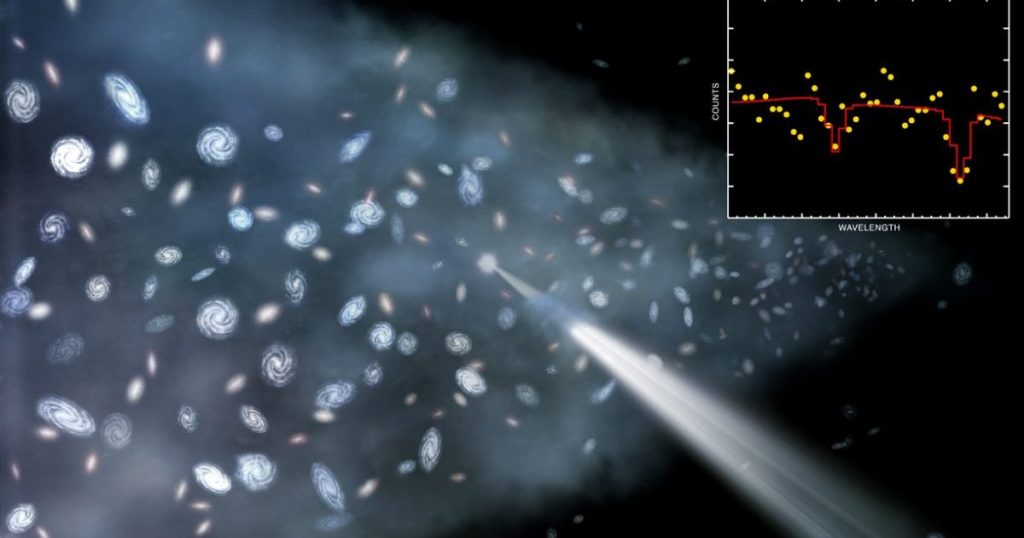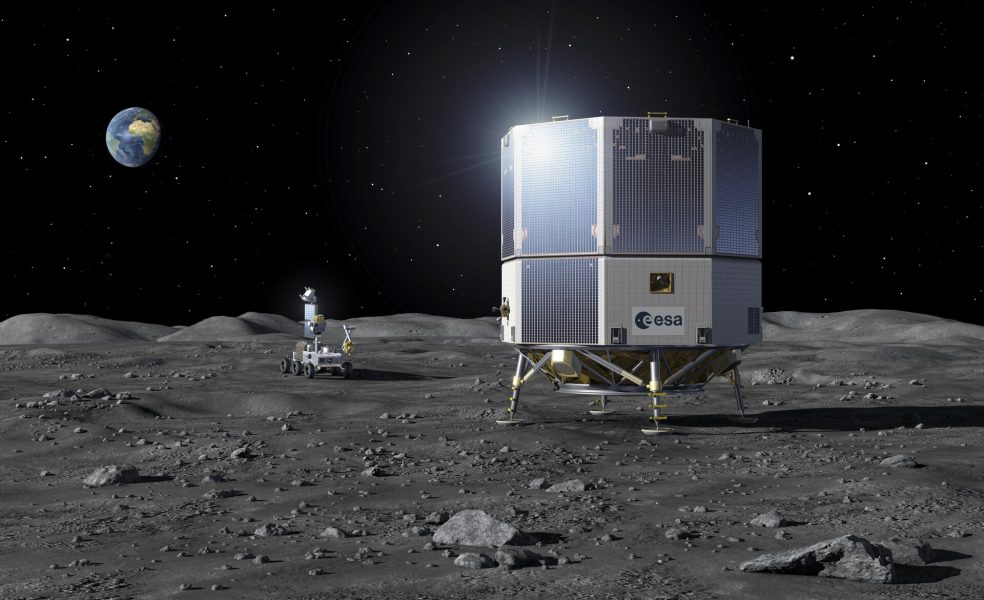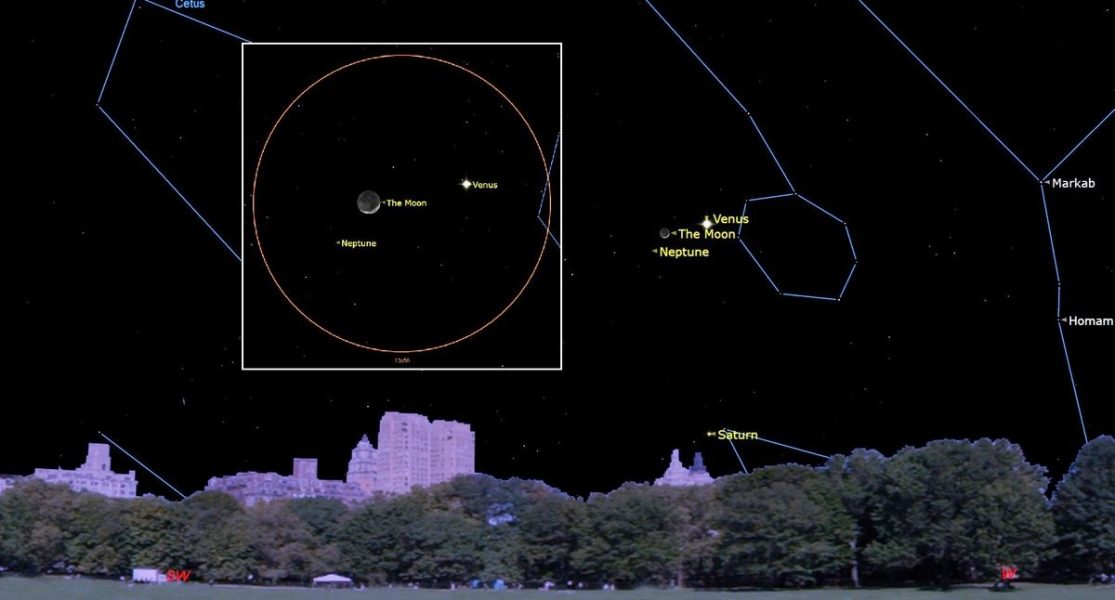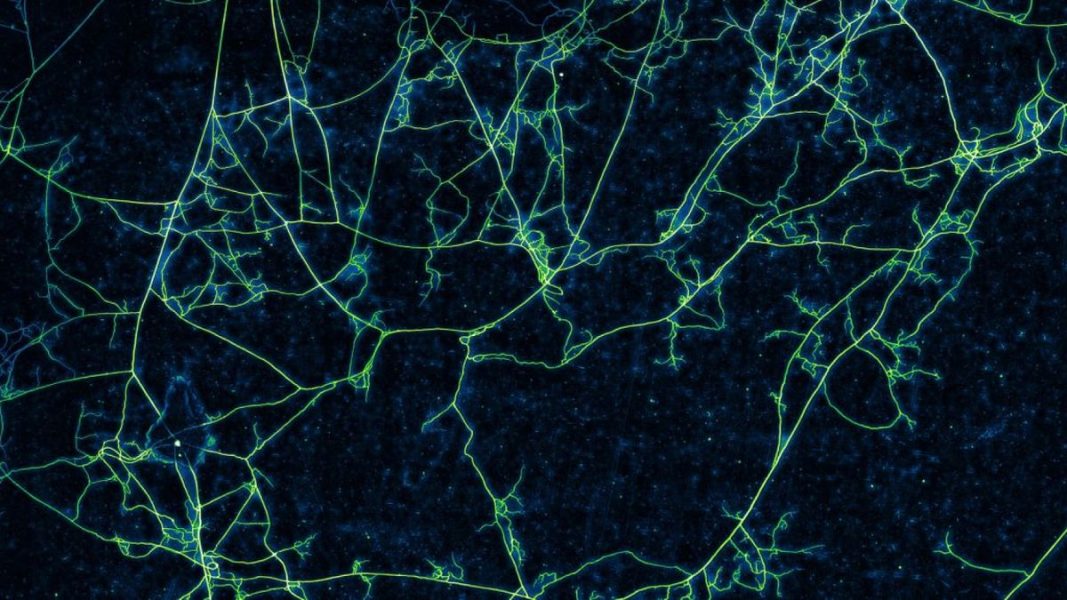Ask Ethan: Why doesn’t dark matter collapse due to gravity? – Big Think

Here in our Universe, it may be the normal matter that we can directly detect, measure, manipulate, experiment with, and observe, but it’s the dark matter that represents most of the mass in the Universe. Whereas all the “stuff” that the planets, stars, gas, plasma, and dust are composed of represents about 4.9% of the total energy in the Universe, the mysterious dark matter — whose nature is unknown but for which the observational astrophysical evidence is overwhelming — makes up a whopping 27% of the cosmic energy budget. Only dark energy, making up 68% of the Universe, is more important from an energy density perspective.And yet, dark matter is only ever found in diffuse halos, never in collapsed clumps like normal matter. Why is that? That’s the subject of this week’s question, coming all the way from Barry Lewis in New Zealand, who wants to know:“How does dark matter, while being gravitational, not collapse? I can’t think of any discussion I’ve come across that addresses this apparent need for it to experience some sort of mutual repulsive force.”It’s a tricky question, because it comes along with two common misconceptions. First, that simply gravitating is sufficient to lead to collapse, even though we use the term “gravitational collapse” all the time in astrophysics. And second, that a lack of collapse indicates some sort of repulsive force. Let’s dive into the puzzle and unpack what’s really going on.The best way to understand what happens — and what doesn’t happen — to dark matter is to consider the stuff we’re more familiar with first: normal matter. Most normal matter that we know is in the form of atoms: atomic nuclei, made up of either bare protons or bound combinations of protons and neutrons, surrounded and orbited by much lighter particles known as electrons. Neutral atoms have the same number of electrons orbiting them as the number of protons in their nucleus, whereas ions have either more (for negatively charged) or fewer (for positively charged) electrons compared to the number of protons in their nucleus.Because of these physical properties inherent to normal matter, there are actually three main classes of force we need to consider for normal matter.Credit: M.A. Latif et al., Nature, 2022One of the most common things we see in the Universe that normal matter can do is simply to collapse — under its own gravity, as we often say — and lead to the formation of new stars. It would be absolutely reasonable to ask, “What’s driving this collapse?” and to come up with a straightforward answer: gravity.That’s partially correct! If you took a cloud of gas that was large and massive, and all of the particles within that gas were initially at rest, and then turned off all of the non-gravitational forces while letting gravity do its thing, you would get gravitational collapse. In fact, as was shown back in the 1910s, shortly after general relativity was first put forth in its current (final) form, you wouldn’t just get gravitational collapse occurring; you’d get gravitational collapse that brought you all the way to the formation of a black hole!It doesn’t matter what the initial configuration of your particles are, either. They could be spherical, cylindrical, cube-like, distributed in a circle, or even completely random: like some sort of wild-grown potato. None of that matters. If all the particles start off at rest, and there’s nothing else going on in the Universe except for gravity in this local, massive particle-dominated region of space, that’s the only possible outcome: gravitational collapse, all the way down, directly, to a black hole.But what if there are other properties at play?Sure, you might think the first thing to do would be to turn on the nuclear forces, and therefore — since these particles are atoms, with atomic nuclei at their cores — you’d reason that gravitational collapse would proceed only until the atomic nuclei got close enough to trigger nuclear fusion, leading to the formation of stars.However, before you got to that stage, you might realize that you did yourself a disservice by ignoring an important physical fact: nuclear fusion, the process that governs the energy production in stars, isn’t determined by the density of particles in the star’s core alone, but rather is dependent on both the density of particles and also the temperature of the particles within the star’s core. In particular, the most common type of nuclear fusion found in stars — where bare protons fuse into heavier atomic nuclei — can only proceed at temperatures reaching 4 million K or above. That’s a very high temperature indeed!There were two things that we neglected that turn out to be tremendously important, then, when it comes to how what we call “gravitational collapse” actually works: the energy (including the energy-of-motion, or kinetic energy) of the particles that goes into forming these stars, and the force that governs the heating, cooling, radiation, and interaction of these particles: the electromagnetic force.Credit: ESO, M.-R. Cioni/VISTA Magellanic Cloud survey. Acknowledgment: Cambridge Astronomical Survey UnitIn our real Universe, it isn’t possible to have a large collection of massive particles that are distributed over a large volume of space that are all instantaneously at rest. Instead, the particles found in any gas cloud each have an inherent speed to them based on the interactions they’ve experienced: we call this the kinetic theory of gases. Particles bounce around and interact with one another, exchanging energy and momentum until they reach what’s known as thermal equilibrium: a state where the average heat (or kinetic energy) of any part of the system is equal to the average heat (or kinetic energy) of the entire system itself.This is something that only occurs for atoms and ions, the most common forms of normal matter in the Universe, because of the electromagnetic interaction. When particles collide with one another, they can do so in two ways:If all collisions were elastic, you’d simply get a large mass of gas that swirled and orbited around its overall center of mass, with properties like the temperature and kinetic energy of each species of atom in your gas determined by a well-studied distribution: the Maxwell-Boltzmann distribution. As shown above, this is an often useful approximation for something like a gas heated to a certain temperature inside a constant-volume calorimeter.However, if you were to take that same imaginary population of gas, and you decreased the volume that it occupied — which is precisely what happens when collapse occurs — you’d find that the temperature of the gas increased! Higher temperatures correspond to greater speeds and greater kinetic energies, and that leads to another consequence as well: higher pressures.When you increase the pressure of a gas, it tends to want to expand outward. The only way to get a gas cloud to collapse, then, is to:So, how does normal matter shed its heat away? Through heat-emitting inelastic collisions, through photon-emitting electromagnetic radiation, or through being in contact with a colder population of material.(Credit: NASA, ESA and STScI)This is why we can’t form new stars from populations of hot gas; the initial molecular cloud has to be sufficiently cold, or it won’t be able to collapse. It’s why there are enormous temperature gradients that form within the hearts of protostars and other collapsing clouds of gas: because where the particles are densest and have collapsed the most severely, the greatest amount of heat gets trapped, as opposed to the less-dense outer layers that can more easily radiate, convect, and thermally transfer heat away. This is why large gas clouds tend to fragment into smaller clumps, and why we don’t just form “one giant star” from most star-forming regions, but hundreds, thousands, or even greater numbers of stars of a wide variety of masses.However, all of these ways of “getting rid of heat” or “shedding kinetic energy” depend on that one interaction that makes radiation, thermal transfer, and inelastic collisions possible: electromagnetism. If we turned the electromagnetic interaction off — which, perhaps fortunately, we can’t do for normal matter — then that gas cloud could never collapse to form stars. Moreover, normal matter couldn’t collapse down to form a disk for disk galaxies; material would never form protoplanetary disks around newly forming stars, never leading to planets; the Universe would struggle to make any bound structures at all.But it could make diffuse, “puffy” structures, because of two main reasons: there would still be massive particles, or particles with a positive rest mass, along with the fact that the Universe is expanding. We normally think about the expanding Universe as being important for radiation: species like photons or gravitational waves. If you have an expanding Universe and radiation travels through it, the wavelength of that radiation gets longer, and it loses energy, or “cools off.”Well, it turns out that radiation isn’t the only stuff that loses energy and “cools off” as the Universe expands; massive particles, or matter, does too. Matter has two components to its energy:Even though our Universe started with a hot Big Bang, it also has been expanding. In general, for matter, when its kinetic energy is comparable to (or larger than) its rest mass energy, it moves close to the speed of light, behaving similarly to radiation. But when its kinetic energy is small compared to its rest mass energy, it moves slowly and can start to clump together.In other words, even if we filled the Universe with normal matter with the electromagnetic interaction turned off, as it expanded, the matter would slow down and clump together into large, massive, diffuse structures: halos and filaments.Does this sound familiar?It should sound familiar; this is precisely how dark matter behaves: as normal matter with the electromagnetic interaction (and also, at least, the strong nuclear interaction) turned off! While normal matter can collapse to do things like “go splat” and “stick together” and “shed energy” and “undergo inelastic collisions,” dark matter can do none of those things. It can only attract other particles (including other dark matter particles) through gravitation, and lose kinetic energy along with the expansion of the Universe.In other words, even though we, as astrophysicists — including me, personally, as an astrophysicist — often talk about normal matter “gravitationally collapsing,” it’s not that gravitation is the major factor in why our familiar collapsed structures formed. Gravitation is what drives the collapse, but it’s the electromagnetic (and, to a much lesser extent, the nuclear) interactions that are what permit “collapsed structures” to form. That’s the only reason why normal matter can form:in general. Without the electromagnetic interaction, normal matter would be trapped the way dark matter is: in large, diffuse, fluffy, halo-like structures, unable to collapse further.That’s the solution to the big puzzle. Sure, gravitation is the impetus for the mutual attraction between all objects that possess a rest mass, and the more total mass you have confined within a given volume, the stronger the self-gravitational force is going to be for that collection of matter. But gravitation doesn’t violate energy conservation; it simply turns (gravitational) potential energy into kinetic energy when particles get drawn into the location where gravitation is strongest. Unless there’s some mechanism for those moving particles to do things like:they’re never going to fully collapse, but rather will only remain bound together in a diffuse, fluffy, uncollapsed halo.The biggest difference between dark matter and normal matter isn’t factors like “mass” or “gravitation” at all; in fact, those are two properties they very much not only have in common, but experience identically. The big differences arise from the fact that normal matter interacts through other forces as well — via the electromagnetic force, in particular — which allows it to do all of those aforementioned things, while dark matter experiences none of them, at least as far as we can detect. Dark matter doesn’t experience a repulsive force, nor does it need to. Just the fact that it only interacts gravitationally, and not through any other means, ensures that it won’t ever collapse down to form compact, complex structures the way normal matter so routinely and unavoidably does.Send in your Ask Ethan questions to startswithabang at gmail dot com!
Source: https://bigthink.com/starts-with-a-bang/doesnt-dark-matter-collapse-gravity/






